Veneer
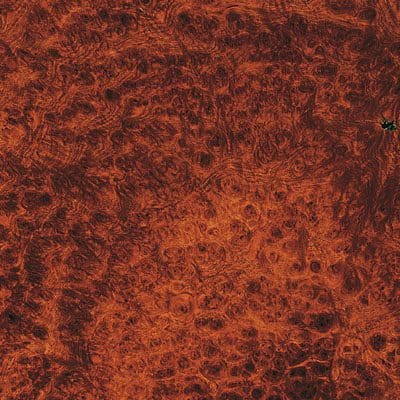
Amboyna Burl
With its golden to chocolate brown tones, the amboyna burl looks elegant and exclusive. The closely spaced burl cores have the same shade as the surrounding fine lines. This combination of subtly colored areas and bordering lines gives the veneer a mysterious appearance. The exclusive burl of the amboyna wood had the honor of being the first figured veneer to grace the dashboard of Rolls Royce.

European Walnut
One of Europe’s fine hardwoods, the walnut is known best for its historical usage in the production of high-quality furniture and items during the Renaissance and Baroque period. This lovely and classic wood has soft grayish brown to chocolate brown and even reddish brown tones and a more or less pronounced sapwood area. The annual growth rings, which are set off by their color, produce a strikingly quilted or striped texture. Numerous variations of this veneer figure are created by more or less distinct nearly black stripes.

American Black Walnut
The structure and color of the American black walnut can easily be distinguished from the European variety. With its strong gray color and clearly striped or figured grain, the veneer creates a dignified ambience. However, the fingernail-sized ingrown particles known as “bird pecks” can be found in the American walnut, which reduces the quality and complicates the search for wood that can yield veneer of high quality.
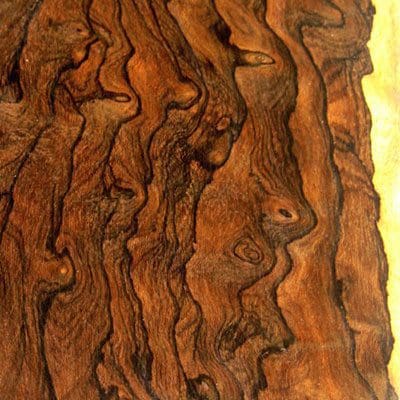
Ziricote
Brownish color with lighter sections and dark distinguished lines, sometimes in combination with the decorative yellow sap. The lively structure, often in long cloudy forms looks like Brazilian Rosewood.
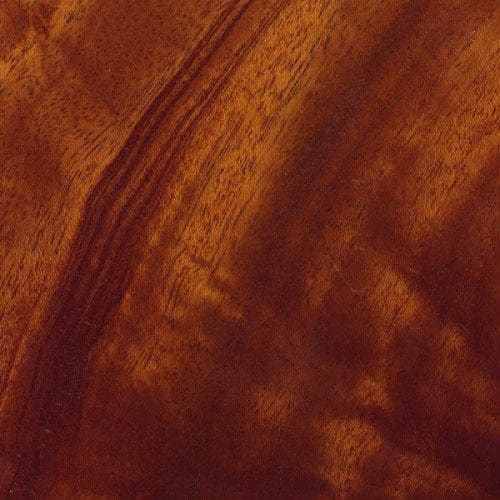
African Mahogany Crotch
Veneer produced from crotches or curls of African mahogany are beautiful works of art whose mysterious light and shadow contrasts present the viewer with a vivid and fiery image. The soft reddish brown tone with a slight golden shimmer intensifies the beauty of the wood. Truly lovely pyramid qualities are very rare and extremely valuable.

Sapele Pommelé
Medium-to short-wave radial deviation of fibers in the wood lead to the very attractive picture of Sapele pommelé. The seeming like a mountain range with peaks and valleys texture is intensified by the mysteriously beautiful reddish-brown color. With increasing age, intensity and depth of the veneer image increase. These veneers are therefore very decorative and desirable.
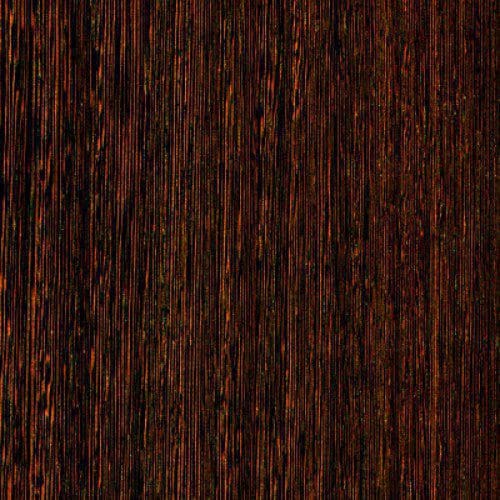
Wenge
Wenge is a very striking dark and large-pored wood with a prominent two-tone appearance. Light brown stripes and figures caused by the parenchyma cells contrast with the primarily coffee-colored wood. This dark and contrast-rich veneer figure with a matte finish creates an elegant atmosphere. A special lacquer which cannot react with the many substances in wenge should be used to maintain the lovely surface and to protect it from ultraviolet rays.

Santos Rosewood
Wenge is a very striking dark and large-pored wood with a prominent two-tone appearance. Light brown stripes and figures caused by the parenchyma cells contrast with the primarily coffee-colored wood. This dark and contrast-rich veneer figure with a matte finish creates an elegant atmosphere. A special lacquer which cannot react with the many substances in wenge should be used to maintain the lovely surface and to protect it from ultraviolet rays.

Burl Walnut
The walnut burl is characterized by its finely drawn and at the same time expressive structure. The classic, elegant and exclusive effect exerts a strong fascination. As one of the most valuable timbers at all walnut burl is very sparingly used, for example in interior design, with single units in the living area, with representative rooms and the exclusive automotive.

Macassar Ebony
Ebony is an extremely hard species. Its elegant and dark veneer figure contains a grayish brown to reddish brown color with dark brown to black stripes. The smooth and strikingly radiant surfaces have a characteristic striped appearance. Dark mineral deposits can occasionally be seen in the vessel lines on the lateral surfaces.
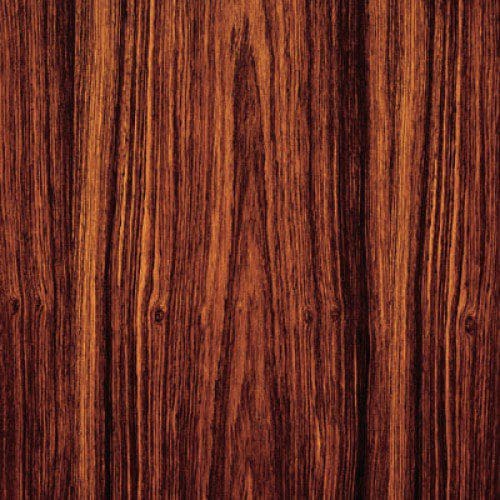
Indian Palisander
Exclusive and attractive are synonyms for the veneer of Indian Palisnder(( rosewood). Like all other rosewood, the Indian also has a lively floral and striped veneer pattern. The elegantly brown base color ranges from red to purple and black. The vividness of the image is formed by purple-violet to dark brown color zones/stripes. Frequently mineral deposits are present, slightly affecting the veneer.
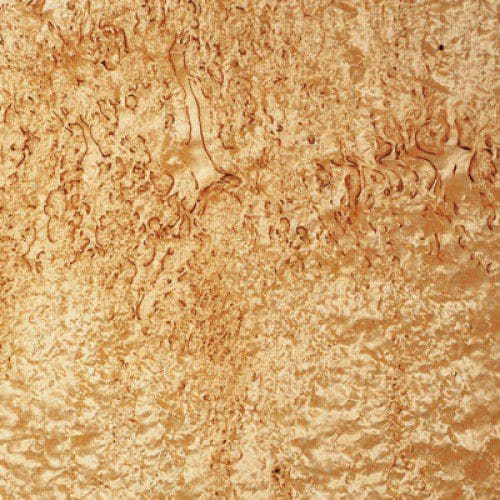
Birch Burl
A highly unusual habit of the birch leads to this especially decorative veneer figure. The birch burl develops from coadunate inclusions presumably caused by infections. Within the wood fiber these inclusions show up as narrow and dark portions of bark. The result is an attractive flame pattern in the overall beige tone of the wood.
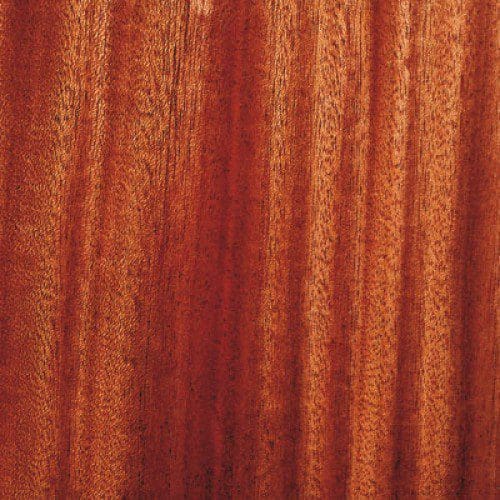
Heavy Mahogany
Kosipo mahogany has a reddish brown to violet brown color which tends toward brown with the increasing age of the tree. On the figured or striped longitudinal surfaces, the dark content of the vessel lines is recognizable. The interlocked fiber results in enchanting shiny stripes, whose appearance is more uniform than in utile but not as close as in sapele. It’s nearly impossible for the untrained eye to detect differences in the three species of utile, sapele and kosipo.
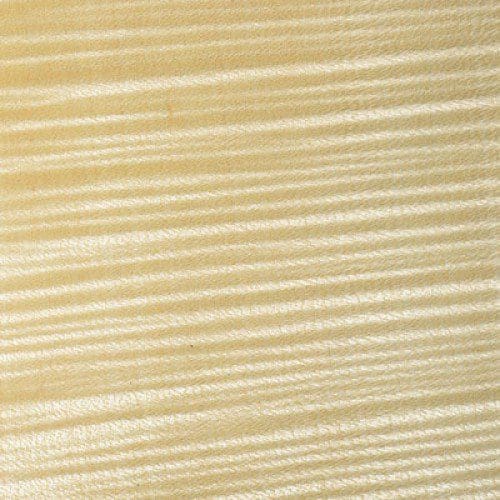
Figured Sycamore
Its highly decorative character makes figured sycamore a popular variety of standard goods. This particular wood has a wavy figure and more or less regular and distinct stripes which run across the grain. The color is almost white to light yellow and has a radiant, silky shine.
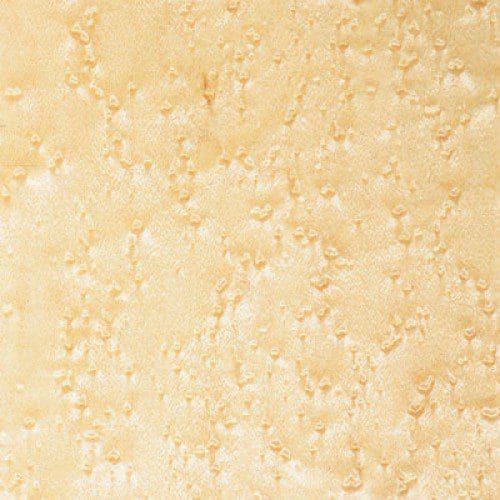
Birdseye Maple
The wood grain figure which emerges here is made up of approximately one-half-centimeter rings that resemble birds’ eyes. The contrast between light and shadow in these eyes yields a mysterious and fascinating image. The color of the wood, light white to whitish-yellow, changes toward the core of the trunk into a pale golden brown and combines with the lively grain to produce an enticingly mellow ambience.
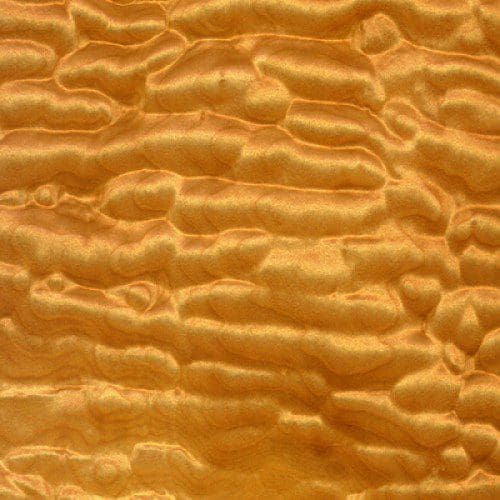
Tamo
Also called Japanese ash. The texture of Tamo falls out very lively and unique. The wood itself, which is slightly darker than our native ash, has the shell-like, cloudy or figured drawing which makes for a very decorative and exclusive appearance.
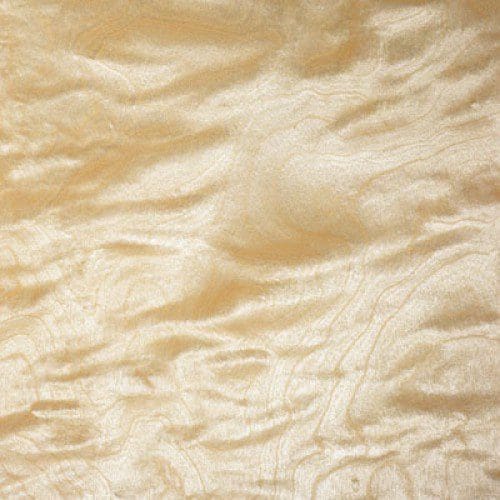
Icebirch
A highly prized variety is the curly birch, which has a silky radiance and especially decorative markings. The wood contains patterns of flame-like figures that result from an irregular wavy grain. Reddish-brown pith flecks occur occasionally, which show up as long stripes on the lengthwise surface of the yellowish or reddish-white to light brown wood.

Palm
Due to its exceptional structure palm wood is ideal for modern styles, such as in furniture, floor and wall coverings. Due to its extreme hardness palm is very tough and durable. In the Art-Deco era unique, and extremely valuable furniture was veneered with end grain veneers.
